Have you ever watched perfectly ripe fruit go wrong on your counter? Do you wish you could enjoy summer’s bounty year-round?
This shared experience highlights the importance of food preservation. What is food preservation? It’s treating and handling food to stop or slow down its spoilage, loss of quality, edibility, or nutritional value.
Throughout history, people have developed various food preservation methods to ensure they have food when fresh food is unavailable. From ancient times, preserving food has been crucial for survival, allowing people to store excess produce and meat for future use.
These methods prevent spoilage and help maintain food security by reducing waste and ensuring a steady food supply.
This article will explore the principles, methods, and benefits of preserving food, ensuring you understand its significance and how it can be applied in modern times.
What is Food Preservation?
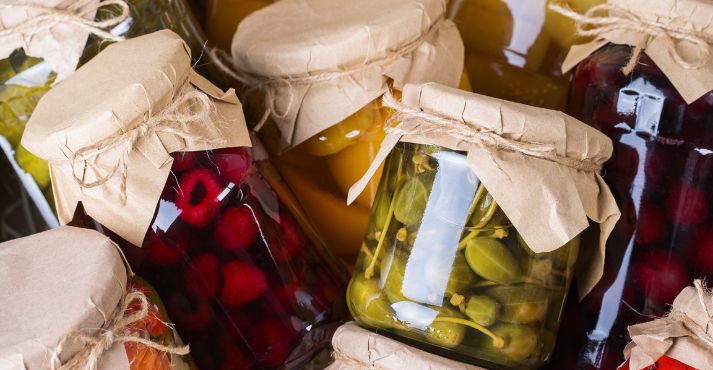
Food preservation encompasses a spectrum of techniques and methodologies, each with a singular mission: to conserve food resources and prolong the freshness of edibles.
This is achieved through a synthesis of time-tested traditions and innovative methods, all aimed at achieving the following objectives:
1. Preventing Spoilage
Food preservation techniques are a bulwark against the encroachment of microorganisms such as bacteria, molds, and yeasts. By curbing their growth, these methods effectively thwart food spoilage and ensure the safety of consumables.
2. Extending Shelf Life
The primary goal of food preservation is to extend the shelf life of various food items. This means that perishable goods can be stored and enjoyed well beyond their natural season or harvest, reducing the need for continuous production and transportation.
3. Enhancing Food Safety
Ensuring food safety is paramount, and food preservation is a frontline defense. It halts the development of harmful pathogens, diminishes the risk of foodborne illnesses, and affirms that our food is delectable and secure.
4. Reducing Food Waste
Food preservation aligns harmoniously with the global endeavor to curtail food waste. By averting Spoilage, it minimizes the volume of food that goes uneaten and discarded, in turn conserving resources and addressing hunger-related issues.
5. Enabling Year-Round Availability
Food preservation techniques empower the year-round availability of seasonal produce, guaranteeing access to fruits, vegetables, and other perishables outside their natural harvest windows. This is particularly pivotal in regions with distinct seasons or limited local production.
6. Cultivating Culinary Creativity
Preservation methods have sculpted the landscape of culinary traditions worldwide. Techniques like pickling, fermenting, and drying have spawned distinctive flavors, textures, and culinary innovations.
7. Reducing Environmental Impact
By extending the shelf life of food, preservation techniques can mitigate the environmental toll associated with food production, transportation, and disposal, championing a more sustainable and eco-conscious food system.
History of Food Preservation
To develop a comprehensive appreciation for the art and science of food preservation, it is imperative to undertake a historical exploration, delving into the evolution of these techniques over time.
From ancient practices to today’s innovative methods, food preservation has been a cornerstone of human survival and culinary tradition.
Ancient Food Preservation
The roots of food preservation stretch far back into our history. In ancient civilizations, ingenious methods were developed to ensure food availability beyond the harvest season. Some of the earliest preservation techniques included:
Drying: The sun’s heat was harnessed to remove moisture from fruits, vegetables, and meats, preventing Spoilage.
Fermentation: The transformative power of microorganisms was employed to preserve foods like cabbage into sauerkraut and grapes into wine.
Salting: Salt was used to draw out moisture, creating an inhospitable environment for microorganisms.
Pickling: Foods were submerged in acidic solutions like vinegar to extend their shelf life.
Evolution of Preservation
As societies advanced, so did their methods of food preservation. The Middle Ages saw the rise of salted and smoked meats, making long sea voyages and harsh winters more manageable.
In the 19th century, the advent of canning by Nicolas Appert and later advancements in refrigeration by Carl von Linde revolutionized the food industry.
The 20th century has witnessed the development of frozen foods, which brought convenience and year-round availability to consumers.
In recent decades, innovative techniques like vacuum packaging, modified atmosphere packaging, and high-pressure processing have further extended the shelf life of foods while maintaining their quality.
Traditional vs. Modern Preservation
While modern methods have undoubtedly streamlined food preservation, traditional techniques play a significant role in culinary traditions worldwide.
At home and in small-scale artisanal settings, numerous skilled producers and passionate individuals continue to use traditional techniques such as smoking, drying, and fermenting. These methods help craft distinctive and delicious preserved foods.
Common Methods of Food Preservation
Preserving food is essential for reducing waste and ensuring a consistent food supply. Here are some standard methods of food preservation used around the world.
1. Drying and Dehydrating
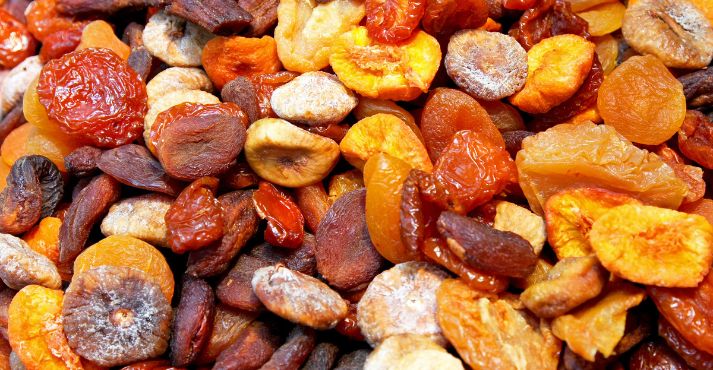
Drying is one of the oldest and simplest methods of preserving food. By removing moisture, drying inhibits the growth of bacteria, yeast, and mold, which can cause food to spoil.
This method has been used for thousands of years, dating back to ancient times when people would dry fruits, vegetables, and meat in the sun.
The process involves reducing the water content in food to a level where microorganisms cannot grow. Today, food dehydrators and ovens are commonly used to dry food more efficiently.
Popular dried foods include fruits like apples and apricots, vegetables such as tomatoes and peppers, and meats like jerky.
Dried food packaging technology ensures that moisture remains low, extending the product’s shelf life. Properly dried and packaged food can last for months or even years, making it a reliable method for long-term storage.
2. Canning
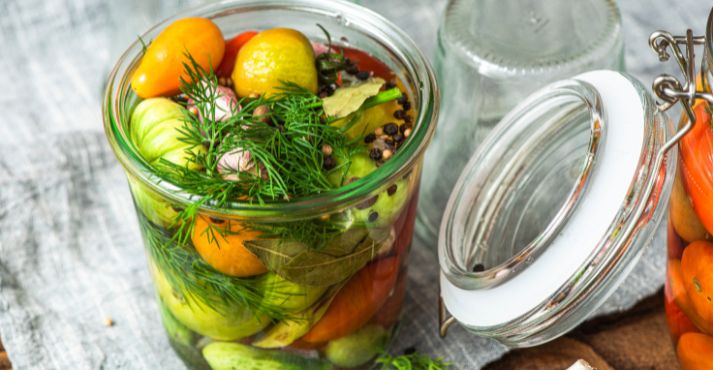
Canning is another widely used food preservation technique that involves sealing food in airtight containers and heating them to kill bacteria and other microorganisms. This method was developed in the early 19th century and has become a staple in households and the food industry.
The canned food market is vast, and various foods, such as vegetables, fruits, meats, and soups, are commonly canned.
The benefits of canning include extended shelf life, preservation of nutrients, and convenience. Canned foods are easy to store and transport, making them a popular choice for consumers.
The canning process involves placing food in jars or cans, sealing them, and heating them to a temperature that destroys harmful microorganisms. This ensures that the food remains safe to eat for an extended period.
3. Freezing
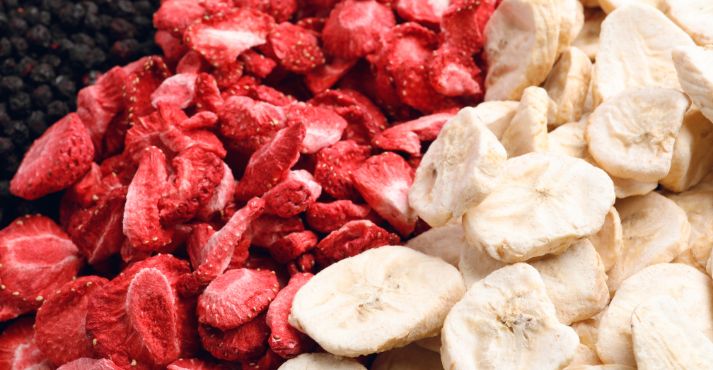
Freezing is a highly effective method of preserving food that involves storing food at temperatures below freezing point, which slows down the activity of bacteria, yeast, and mold. This method is popular due to its simplicity and ability to preserve food’s taste, texture, and nutritional value.
The frozen food market has grown significantly, offering various products such as fruits, vegetables, meats, and ready-to-eat meals. Freezing is particularly effective for preserving seasonal produce, allowing consumers to enjoy their favorite foods year-round.
Common practices for freezing food include blanching vegetables before freezing to preserve their color and texture and using airtight containers or vacuum-sealed bags to prevent freezer burn.
4. Fermentation

Fermentation is a food preservation method involving converting carbohydrates to alcohol or organic acids using microorganisms like yeast and bacteria.
This process preserves food and improves its flavor, texture, and nutritional value. Fermentation has significant cultural importance, especially in regions like Southeast Asia, where it is used to create a variety of traditional foods.
In Southeast Asia, popular fermented foods include kimchi, a spicy fermented cabbage from Korea, and miso, a fermented soybean paste from Japan.
Another well-loved fermented drink is kombucha, a sweetened tea fermented with a culture of bacteria and yeast. These foods are staples in the diet and hold cultural and historical significance.
Fermented foods are known for their health benefits, including improved digestion and a boost in beneficial gut bacteria.
5. Pickling

Pickling is an ancient method of preserving food by soaking it in solutions like vinegar or brine. This technique extends the shelf life of foods and imparts a distinctive tangy flavor.
Pickling has a rich history, especially in Southeast Asia, where it remains a popular method for preserving various foods.
Common pickled foods in Southeast Asia include cucumbers, radishes, carrots, and fruits such as mangoes and plums. These pickled items are often served as side dishes, condiments, or snacks, adding flavor to meals.
Pickling dates back thousands of years, and its techniques have been passed down through generations. Today, pickling continues to be a beloved method of preserving food, thanks to its simplicity and the unique flavors it produces.
Advances in sustainable packaging have made it easier to store and transport pickled foods, ensuring they remain fresh and flavorful for extended periods.
6. Salting and Curing
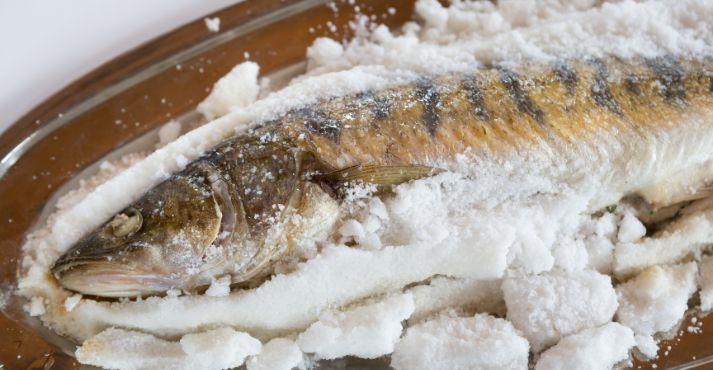
Salting and curing are traditional methods for preserving food. They involve using salt to draw moisture out of food, thereby inhibiting the growth of bacteria.
These techniques have been used for centuries to preserve meats and fish, ensuring a steady food supply even when fresh food is scarce.
Historically, salting and curing were essential for preserving food before the advent of refrigeration. In many cultures, these methods were used to prepare meats like bacon, ham, and fish, which could be stored for long periods.
In Southeast Asia, salted fish and cured meats remain popular and are integral to many traditional dishes.
Salting involves coating the food in salt or submerging it in a brine solution, while curing can also include using sugar, nitrates, and nitrites. These methods preserve the food and enhance its flavor and texture.
With the development of modern food packaging technology, salted and cured foods can be packaged in ways that maintain their quality and extend their shelf life
7. Vacuum Sealing
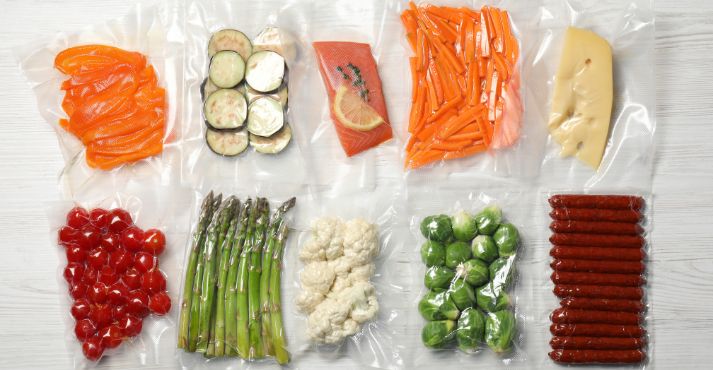
Among the different methods of food preservation, vacuum sealing is a modern technique that involves removing air from a package before sealing it.
This process reduces the oxygen levels, which helps prevent the growth of aerobic bacteria and fungi, thereby extending the shelf life of food. Vacuum sealing is particularly effective for preserving a wide range of foods, including meats, vegetables, and grains.
The advantages of vacuum sealing include reducing food waste, maintaining freshness, and protecting food from freezer burn when stored in the freezer.
This method is commonly used in both commercial and household settings. Advances in vacuum sealing technology have made preserving food with minimal effort easier, ensuring it stays fresh for extended periods.
8. Sugaring
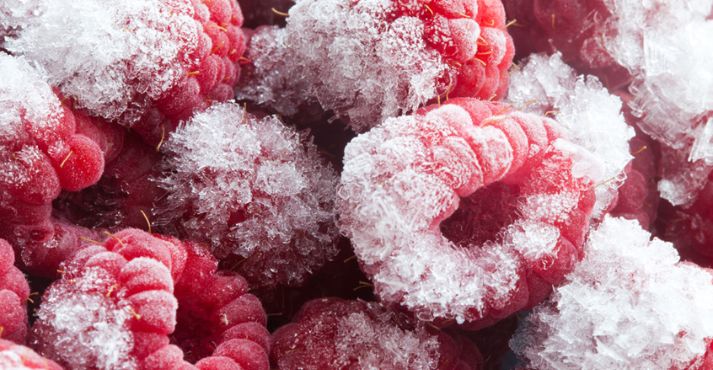
Sugaring is an ancient method of preserving food that uses sugar to draw moisture out of food, thereby inhibiting the growth of bacteria and molds. This method has been historically used to preserve fruits, turning them into jams, jellies, and candies.
Creating a high-sugar environment reduces water activity, making it difficult for microorganisms to thrive.
Common foods preserved through sugaring include fruits like strawberries, apricots, and plums. The process involves coating or mixing the food with sugar, which helps retain its color, flavor, and nutritional value.
Sugaring preserves the food and enhances its sweetness, making it a popular choice for preserving seasonal fruits.
9. Lyophilization (Freeze-Drying)
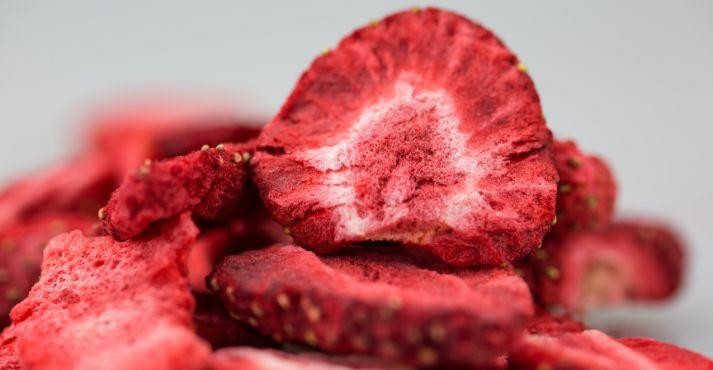
Lyophilization, or freeze-drying, is a sophisticated method of food preservation that involves freezing the food and then reducing the surrounding pressure to allow the frozen water in the food to sublimate directly from the solid to the gas phase.
This process removes moisture without causing significant damage to the food’s structure. Lyophilization benefits include retaining the food’s nutritional value, flavor, and texture. This method is commonly used for preserving fruits, vegetables, and even complete meals.
Lyophilization is particularly useful for creating lightweight, non-perishable food products ideal for camping, hiking, and space missions. Advances in food preservation techniques have made it more accessible and efficient.
10. Sterilization
Sterilization is a critical food preservation method involving using heat or chemicals to destroy all forms of microbial life, including bacteria, viruses, and spores. This process ensures that the food is entirely safe to consume and can be stored for extended periods without spoilage.
Typical sterilization uses include canned foods, dairy products, and certain beverages. The importance of sterilization in ensuring food safety cannot be overstated, as it prevents foodborne illnesses and extends the shelf life of products.
Sterilization helps maintain the quality and safety of food products by eliminating harmful microorganisms. Understanding the principles of food preservation is essential for effective sterilization.
11. Pasteurization
Pasteurization is a widely used method of food preservation that involves heating food and beverages to a specific temperature for a set period to kill harmful microorganisms without affecting the quality of the product.
This technique was developed by French scientist Louis Pasteur in the mid-19th century, primarily to prevent spoilage in wine and beer. Pasteurization has since become essential for preserving a variety of foods and beverages.
The process involves heating liquids such as milk, juice, and certain alcoholic beverages to a temperature of about 60-85 degrees Celsius (140-185 degrees Fahrenheit) for a short duration, typically ranging from a few seconds to several minutes.
This heating process effectively destroys pathogens and extends the product’s shelf life while maintaining its nutritional value and flavor.
Pasteurization is crucial in ensuring the safety and quality of many beverages and other foods. For example, pasteurized milk is less likely to harbor bacteria such as E. coli or Salmonella, making it safer for consumption.
Additionally, pasteurized juices and canned soups benefit from an extended shelf life and reduced risk of spoilage.
The technique’s widespread adoption has significantly impacted public health by reducing the incidence of foodborne illnesses.
Advances in food preservation techniques have continued to improve the efficiency and effectiveness of pasteurization, ensuring that consumers receive safe, high-quality products.
Modern Techniques and Innovations
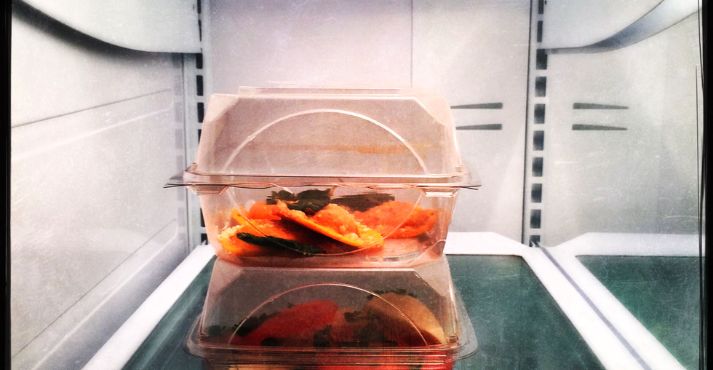
With the advancement of technology, food preservation methods have evolved significantly. Modern techniques not only increase the shelf life of food but also ensure safety and maintain nutritional value. Here are some of the latest innovations in the field of food preservation.
1. High-Pressure Processing (HPP)
High-pressure processing (HPP) is a cutting-edge food preservation technique that uses extremely high pressure to kill harmful bacteria, viruses, and other pathogens in food.
Unlike traditional methods that rely on heat, HPP uses pressure, which helps retain the food’s flavor, texture, and nutritional value. This method is particularly effective for preserving juices, meats, and ready-to-eat meals.
HPP’s benefits include its ability to extend food’s shelf life without the need for chemical preservatives. It also maintains the food’s natural qualities, making it a popular choice in the food processing industry.
By destroying microorganisms, HPP ensures the food is safe for consumption while preserving its freshness and taste.
HPP is an eco-friendly technique that uses water and high pressure instead of heat or chemicals, reducing the environmental impact. Due to its effectiveness, it has gained popularity in preserving food.
2. Food Irradiation
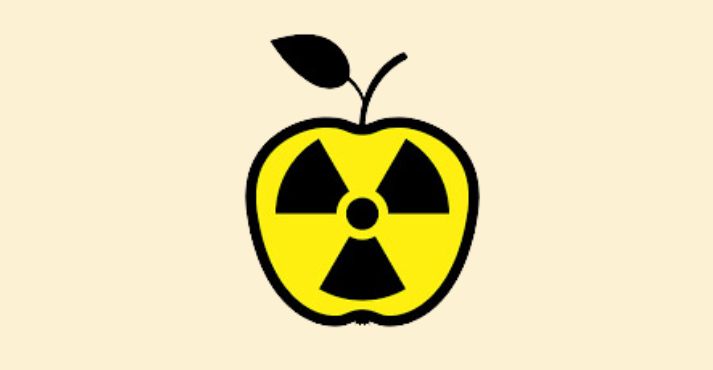
Food irradiation is another innovative food preservation method involving exposing food to ionizing radiation.
This process effectively kills bacteria, parasites, and other pathogens, thereby extending the shelf life of the food and ensuring its safety. Food irradiation is commonly used for spices, fruits, vegetables, and meat products.
The safety of food irradiation has been extensively studied, and it has been approved by various health authorities, including the World Health Organization (WHO) and the Food and Agriculture Organization (FAO).
The process does not make the food radioactive, and it preserves the food’s nutritional quality and taste.
Food irradiation faces some public resistance despite its benefits due to misconceptions about its safety. However, when appropriately regulated under SFA food regulation and other food safety standards, it is a highly effective method of preserving food and reducing foodborne illnesses.
3. Use of Preservatives
Chemical preservatives play a crucial role in food preservation, helping to extend shelf life and maintain food safety.
These substances inhibit the growth of bacteria, molds, and yeasts, which can cause spoilage and foodborne illnesses. Common chemical preservatives include sodium benzoate, potassium sorbate, and nitrates.
The benefits of using preservatives in the preservation of food include the prevention of spoilage, the extension of shelf life, and the reduction of food waste.
They are instrumental in baked goods, dairy products, and processed meats. However, there are concerns about the long-term health effects of consuming foods with chemical preservatives.
While preservatives are essential for maintaining food quality, health-conscious consumers are increasingly demanding natural alternatives and clean-label products.
4. Advanced Packaging Solutions
Innovative food packaging technology plays a vital role in modern food preservation. Advanced packaging solutions include vacuum packaging, modified atmosphere packaging (MAP), and edible coatings, which help extend food’s shelf life while maintaining its quality.
Vacuum packaging removes air from the package, preventing the growth of aerobic bacteria and fungi. Modified atmosphere packaging alters the package’s gas composition, slowing the spoilage process.
Made from natural materials, edible coatings create a barrier that protects food from moisture and microbial contamination.
These packaging innovations preserve the freshness and quality of food and contribute to sustainability by reducing the need for chemical preservatives.
Importance of Food Preservation
Food safety is a paramount concern in our daily lives, and food preservation plays a pivotal role in safeguarding our health by preventing foodborne illnesses. Understanding how food preservation inhibits bacterial growth and ensures safe consumption is essential.
The Role of Food Preservation in Food Safety
Food preservation techniques are specifically designed to inhibit the growth of microorganisms like bacteria, yeast, and molds, which can cause food spoilage and, more critically, pose health risks. Here’s how food preservation contributes to food safety:
- Bacterial Growth Inhibition: Preservation methods, such as canning, freezing, and fermentation, create conditions that hinder or eliminate the growth of harmful bacteria. For instance, canning involves heat treatment that destroys bacteria and prevents them from multiplying.
- Preventing Food Contamination: Properly preserved foods are less susceptible to contamination. The airtight seals in canning and the low temperatures in freezing create barriers that prevent external contaminants from infiltrating the food.
- Shelf Life Extension: By extending the shelf life of food items, preservation methods reduce the chances of consuming spoiled or unsafe products.
- Preservation of Nutritional Value: When applied correctly, food preservation techniques can retain the nutritional value of foods. This ensures that preserved items are not only safe but also nutritious.
- Reducing Food Waste: Effective food preservation minimizes food waste by allowing us to store and consume perishable items over an extended period. This contributes to a more sustainable and efficient food system.
Safe Food Handling
In addition to preservation, safe food handling practices are essential to ensure food safety. These practices include proper storage, cooking, and hygiene measures that reduce the risk of foodborne illnesses.
Preventing Foodborne Illnesses

Foodborne illnesses can lead to various symptoms, from mild discomfort to severe health issues. These illnesses are often caused by the consumption of contaminated or spoiled food.
By implementing food preservation techniques, we significantly reduce the risk of foodborne illnesses, promoting our well-being and overall health.
Minimizing Food Waste through Preservation: A Sustainable Approach
Food preservation is not just about prolonging the shelf life of our favorite edibles; it’s also a powerful tool in the fight against food waste. Reservation practices promote sustainability and resourcefulness by reducing food loss and its environmental impact.
The Connection Between Food Preservation and Waste Reduction
Food waste is a global issue with profound economic, environmental, and social consequences. A significant portion of food loss occurs due to Spoilage and expiration before consumption. Food preservation addresses this challenge in the following ways:
- Extending Shelf Life: Preservation techniques like canning, freezing, and drying significantly extend the shelf life of foods. This means that perishable items can be consumed well beyond their natural season or purchase date, reducing the likelihood of food being discarded prematurely.
- Reducing Spoilage: Preservation inhibits microorganisms’ growth and the Spoilage’s onset. By creating conditions unfavorable to bacteria, yeast, and molds, preservation methods help prevent food from going rancid.
- Year-Round Availability: Preservation allows us to enjoy seasonal produce yearly. This reduces the need for constant production and transportation of fresh items, decreasing the carbon footprint associated with food distribution.
- Sustainable Practices: Many preservation techniques align with sustainable and eco-friendly principles. For example, fermenting vegetables or fruits is a natural process that doesn’t require excessive energy or resources.
- Resource Conservation: Preserving food conserves the resources that go into producing it, including water, land, and energy. It’s a way of maximizing the resources invested in agriculture and food production.
- Reducing Environmental Impact: Food waste contributes to greenhouse gas emissions and environmental degradation. We can reduce these negative environmental impacts by minimizing food waste through preservation.
Promoting Sustainability and Resourcefulness
The synergy between food preservation and waste reduction is a powerful one. It helps protect the environment and promotes sustainable practices in our daily lives. When we use preservation methods to extend the life of our food, we embrace resourcefulness and contribute to a more efficient and environmentally friendly food system.
Conclusion
Now we know that food preservation refers to treating and handling of food to prevent spoilage, loss of quality, and nutritional value.
From ancient methods like drying and pickling to modern techniques like high-pressure processing and advanced packaging, food preservation is essential for ensuring a steady food supply and reducing waste.
By understanding and applying these methods, we can enjoy a variety of foods year-round, maintain their safety, and extend their shelf life.
Whether through traditional practices or innovative technologies, food preservation remains a vital aspect of our daily lives, helping to keep our food fresh and safe.













